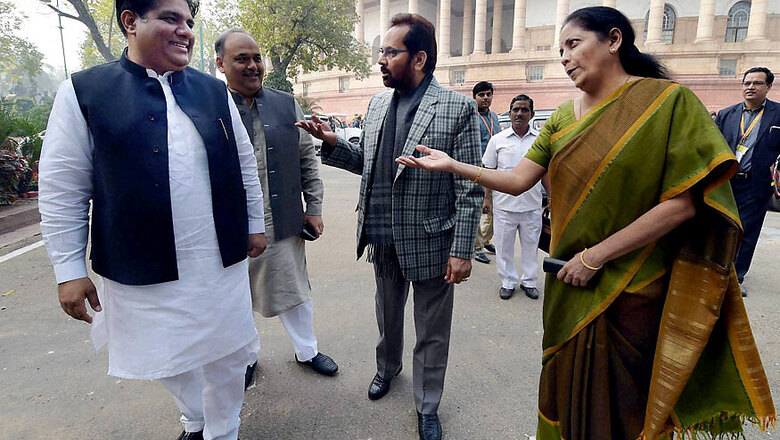
views
New Delhi: Bhupendra Yadav, much like his mentor Amit Shah, is a fiercely private man. Like Shah, he prefers from operating from the confines of a war room than from the stage at an election rally. Yadav, the BJP National General Secretary, emerged as a crucial linchpin in the BJP's election machine in Gujarat.
With a victory in Uttar Pradesh under his belt, Amit Shah's gaze turned to his home state. In April, just a month after the UP assembly elections results, Shah appointed Bhupendra Yadav, an OBC leader from UP and the BJP’s National General Secretary, as the BJP's election in-charge in the state of Gujarat. In just eight months, he would have to learn the complex and fast-changing caste equations of Gujarat, in addition to evolving and implementing strategy.
But Shah did not make his choice lightly. Bhupendra Yadav had been the BJP election in-charge for Rajasthan in 2013, Jharkhand in 2014 and Bihar in 2015. While Bihar did not go the way the BJP would have liked, Yadav delivered results for his boss, Shah, in both Rajasthan and Jharkhand. BJP won 163 seats in the 200-member Rajasthan Assembly and the BJP-led alliance won 47 out of 82 seats in the Jharkhand Assembly. Party insiders even credit Yadav with the planning and implementation of Vasundhara Raje’s ‘Suraaj Sankalp Yatra’ travelled over 13,000 kms across 33 districts in the state.
But when asked what role Yadav played in the Gujarat campaign, a senior Gujarat BJP leader sounded confused, "I don’t understand what you mean. You're asking me what he did? Well, he did everything. He had a part to play in everything from ticket distribution to booth-level management. If Amit Shah outlines the plan, Bhupendra Yadav carries it out."
The leader added that Yadav often shies away from addressing public rallies, often remarking upon the futility of rallies in general. "He often says – keval rally karne se kuch nahi hoga. (Rallies alone will not win you election). His strategy is to focus on local factors. He would sit for hours with state leaders like the CM, the state president and deputy CM to decide which candidate should be fielded in which constituency. When these leaders would go on to address rallies, he would meet local workers for equally long, chalking out local strategy."
But Yadav’s biggest contribution, another leader said, was that he was in-charge of implementing Amit Shah's 'Page Pramukh' strategy. "You see, every constituency has several booths and every polling booth has its voter lists. These voter lists run into several pages and each page has the names of 20-30 voters. The idea is to take one of the people on every page of voter lists and appoint them as the BJP's page pramukh."
This, the source added, will follow a pyramidal structure. Gujarat will have over 50,000 polling booths set up in its 182 Vidhan Sabha constituencies. BJP has also set up 'Shakti Kendras', each of which will have the responsibility to look after the area under 5-6 polling booths. Each constituency area has around 50 polling booths. The page pramukh will be answerable to the booth in charge, who in turn will be answerable to their respective Shakti Kendras. The Shakti Kendra will be accountable to the local MLA or Vidhan Sabha in charge, who will in turn be accountable to the BJP's state leadership.
A leader said, "Yadav made sure that at regular intervals, he would check in with each level of the pyramid. Both he and Amit Shah are convinced that Page Pramukhs are key to victory. It ensures that our people reach every last voter in Gujarat and we have personal contact with everyone. This is the level of groundwork that Congress cannot match. And Yadav has been instrumental in getting this done."















Comments
0 comment